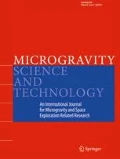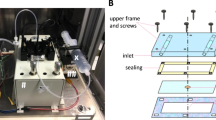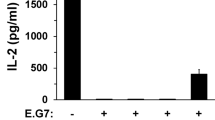Abstract
The level of natural killer (NK) cytotoxic activity was measured during co-cultivation of human lymphocytes and target cells (K-562) in microgravity. Flight experiments were carried out using special instrumentation, the “Fibroblast-1 “ cassettes, in the frame of Russian scientific program during six ISS missions. Lymphocyte suspensions from human venous blood were used in experiments during short-term flights on six ISS missions (7–12). Russian space crew members performed the experiments after Soyuz docking. The first step was mixing lymphocytes and3H-labeled K-562 cells and their incubation at 37°C during 24 hs; the second step was filtration of the cell suspension. The frozen medium and filters were analyzed for the cytokine level and cytotoxic activity after landing. It was found that lymphocytes with different basal levels of cytotoxic activity kept the ability of recognizing and lysing malignant cells. In microgravity, cytotoxity increased to 160% of the basal levels. Donor individual features modulated the magnitude of the increase. The measurement of interleukin levels (TNF-α, IL-1, IL-2) in medium showed that synthesis of TNF-α increased during cell co-cultivation in microgravity. The level of IL-2 was very low inflight and ground control samples. The production of IL-1 by lymphocytes decreased after in-flight incubation. The results indicate that microgravity did not disturb the cytotoxic function of immune cells in vitro during 24 h incubation with specific target cells.
Similar content being viewed by others
References
Konstantinova I. V. and Fuchs B.B.: The immune system in space and other extreme conditions. Harwood Acad. Publ. 112–144 (1991).
Taylor G.R.: Overview of spaceflight immunology studies. J Leukoc Biol., vol. 54 (3), p.179–188 (1993).
Cogoli A.: Gravitational physiology of human immune cells: A review of in vivo, ex vivo andin vitro studies. Journal of Gravitational Physiology, vol. 3(1), p. 1–9 (1996).
Cogoli-Greuter M., Lovis P., Vadrucci S.: Signal transduction in T cells. An overview. Journal of Gravitional Physiology, vol. 11 (2), p. 53–56 (2004).
Sonnenfeld G., Shearer W. T.: Immune Function During Space Flight. Nutrition, vol. 18, p. 899–903 (2002).
Sinkovics J., Horvath J.: Human natural killer cells: A comprehensive review. International Journal of Oncology, vol. 27, p. 5–47 (2005).
Buravkova L.B., Rykova M.P., Andropova E.N., Grigorieva O.V.: Modification of the method for studying cytotoxic activity of natural killer cells for flight experiments in space. Aerospace and Ecological Medicine, vol. 39 (1), p. 55–59 (2005). (Rus.)
Buravkova L.B., Rykova M.P., Grigorieva O.V., Andropova E.N.: Cell interactions in microgravity: cytotoxic effects of natural killer cells in vitro. Journal of Gravitational Physiology, vol. 11 (2), p. 177–180 (2004).
Buravkova L.B., Romanov Yu.A., Rykova M.P., Grigorieva O. V., Merzlikina N. V.: Cell-to-cell interactions in changed gravity: ground-based and flight experiments. Acta Astronautica, vol. 12, p. 67–74 (2005).
Author information
Authors and Affiliations
Corresponding author
Rights and permissions
About this article
Cite this article
Buravkova, L.B., Grigorieva, V. & Rykova, M.P. The effect of microgravity on thein vitro NK cell function during six International Space Station Missions. Microgravity Sci. Technol 19, 145–147 (2007). https://doi.org/10.1007/BF02919470
Issue Date:
DOI: https://doi.org/10.1007/BF02919470




